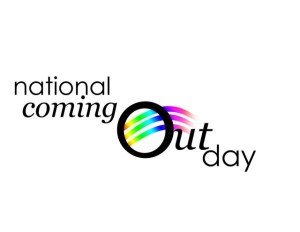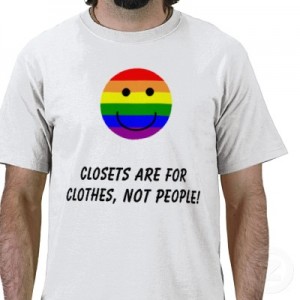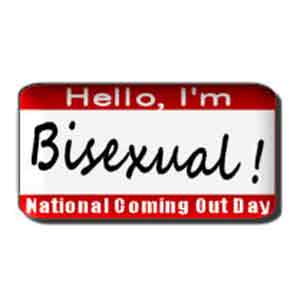Coming Out or Inviting In?: Part I
Increased attention has been given to the notion of “coming out” recently. Many people desire access into the private, sexual spaces of celebrities’ lives as evidenced by the many stories proliferating within media on the sexual orientations of Queen Latifah, Anderson Cooper, Diana King, and Frank Ocean. This two-part series, which initially formed my remarks for a lunch talk that I gave at the Center for the Study of Gender and Sexuality at NYU on February 7, 2011, offers a critical analysis of “coming out” and “the closet.” I also begin to ponder the notion of “inviting in” as an alternative practice. I decided to publish the talk here (and now) because of the many conversations occurring within media on disclosure and the seeming demand for some to “come out.” I am deeply indebted to Sekneh Hammoud-Becket, an Australian scholar and therapist of Lebanese Muslim ancestry, whose brilliant writings on “coming in” pushed me to reconsider the limitation of “coming out” and offers us the possibility of liberation through other means, including conjuring different metaphors of disclosure.
Part I
 The last time that I presented an iteration of this talk, Ugandan activist David Kato’s picture had yet to be published in an anti–gay newspaper, distinctly positioned under the words “hang them.” David Kato had yet to be on the receiving end of increased death threats…he had yet to be mercilessly bludgeoned by way of a hammer…he had yet to die in a vehicle while en route to a hospital. After Kato’s death, the act of “coming out” (the public declaration of our sexed and having-sex selves) now becomes an obligatory act of insurgence. How, then, is it possible to offer a critique of the “coming out” rhetoric, today, in the post-Kato murder days? In these, the days of rabid protest?
The last time that I presented an iteration of this talk, Ugandan activist David Kato’s picture had yet to be published in an anti–gay newspaper, distinctly positioned under the words “hang them.” David Kato had yet to be on the receiving end of increased death threats…he had yet to be mercilessly bludgeoned by way of a hammer…he had yet to die in a vehicle while en route to a hospital. After Kato’s death, the act of “coming out” (the public declaration of our sexed and having-sex selves) now becomes an obligatory act of insurgence. How, then, is it possible to offer a critique of the “coming out” rhetoric, today, in the post-Kato murder days? In these, the days of rabid protest?
The last time that I presented this talk, it was February and not yet September 2010. Several “gay-identified” youth had yet to take their lives in the course of one month. Their names–Tyler Clementi, Justin Aaberg, Asher Brown, Billy Lucas, Cody J. Barker, Seth Walsh, Harrison Chase Brown, Raymond Chase, Felix Sacco and Caleb Nolt–and lives were not yet memorialized. Some argue that one’s self-proclamation as a sexual minority is the beginning of inter- and intra-personal transformation in the lives of our youth. The argument goes: If more adult sexual minorities “come out,” then it follows that youth who identify and/or experience themselves as the same will feel safe enough to live with pride rather than die in shame. Why, then, a push to dismantle the “coming out” paradigm? Why, now, when we daily mourn the physical, social, emotional, and spiritual killings of our young?
The reality is: the last time that I presented this talk, times were different, indeed. And, yet, they were very much the same. Queer folk: young, old, men, women, gender-variant, out, in, lesbian, gay, bi, trans, questioning, intersexed, closeted, outed, black, brown, white, poor, rich, urban, and suburban still faced the threat of ostracization because of presumed and/or actual sexual identities. It has been (and continues to be) difficult times to talk about representations and the politics of representation because both have everything to do with the ways that we inhabit our shared world: the ways that some of us experience access and excess because of our varied privileges and the ways that some experience restriction and lack because of interlocking oppressions…the ways in which we relate to others and the ways in which we are related to. And this has always been the case in terms of the ever-contested and shifting nature of representations. Indeed, an unnamed writer in the Introduction to a Special Issue of Radical America titled, “Becoming Spectacle: Lesbian & Gay Politics and Culture In the Nineties,” provided the following admonishment: “Representations (of lesbians, gay men and sexual ‘deviance’) is happening everywhere (blatantly, subtly, literally, or coded) both in mainstream culture and official politics and by queers themselves. Articles in this issue both interpret dominant representations (subversively), and ask queers to become aware of the politics of their own self-representation.”[1] It is the latter portion of the statement, however, that intrigues me. I argue that an appeal to queer persons to interrogate our self-representations and politics of disclosure, is a call to embrace a necessary and timely turn in movements against heteronormativity and heterosexism. More specifically, I contend that “coming out” is a limited act that does not short-circuit heternormative ideologies and heterosexist practices. But, why?
The process of “coming out of the closet”–when imagined as an act of political resistance–can, indeed, be seen as an emancipatory intervention. It is often considered the only means of survival for queer people. But, what would it mean for us–for queer people–to move from a mode of survival when our survival has always been connected to our ability to daily “come out” from a “closet” that some of us may, or may not, have ever inhabited? What does it mean for us to move from a state of traditional protest to that of radical resistance when our sense of self and communal agency is ostensibly acknowledged and thought to be actuated only after we “come out”, only after we name and define ourselves over against heterosexuals, only after we speak out (even if we really want to keep some things “in”), only after we march in pride parades (even if we feel shame because some pride parades seem to absent other essences of our identities), or only after we live openly and always marked as a lesbian, gay, bisexual, transgender or questioning person (even if the labels themselves seem to limit the fluidity of and/or experiences of our sexed and having-sex selves)? I wonder, then, if it is really useful to speak of our processes of self-disclosure, our moments of self-identification as LGBTQ/queer people, and the practices through which we become self-aware by way of the “coming out” metaphor. Does “coming out of the closet” properly function as the most useful way to name one’s quest towards self and communal liberation and expression? Does the usage of “coming out” and “the closet” metaphors facilitate or impede the liberatory potential of a radical counter-hegemonic confrontation with heterosexism and heteronormativity? Should we consider nuanced and innovative interventions, which speak, more succinctly, to a queer politic? In what follows, I problematize the functionality of “coming out” and argue for a turn to a new intervention, or what I am naming the practice (and politic) of “inviting in.”
On “Coming Out” and the “Closet”
 Do the “coming out” and “closet” paradigms influence our imaginations of ourselves as spectacle and/or as deviant bodies in need of acceptance? Are LGBTQ individuals symboled as the presumed “other” in the “coming out”/”closet” paradigm whose senses of self and identity and behaviors are always defined in relation to the normative heterosexual? If so, might “coming out” be understood as a practice that is, itself, heteronormative?
Do the “coming out” and “closet” paradigms influence our imaginations of ourselves as spectacle and/or as deviant bodies in need of acceptance? Are LGBTQ individuals symboled as the presumed “other” in the “coming out”/”closet” paradigm whose senses of self and identity and behaviors are always defined in relation to the normative heterosexual? If so, might “coming out” be understood as a practice that is, itself, heteronormative?
Coming out has been defined as “the process of recognizing, exploring, integrating, and disclosing an alternative sexual orientation.”[2] And, even though the argument goes that “coming out” functions to facilitate one’s sense of self-awareness and acceptance, it is also a politicizing process that seeks to unsettle heterosexist understandings and practices. To be sure, sociologist Arlene Stein argues, “during the past three decades, one of the primary goals of the lesbian/gay liberation movement has been to encourage people to ‘come out’ and declare their sexual identifications proudly and publicly as a means of countering the shame and secrecy associated with homosexuality in our culture.”[3] Historian George Chauncey, however, traces the phrase origin of “coming out” to pre-World War II when it carried a different connotation than the politicizing potential contained in its present usage; Chauncey argues that it did not suggest that one was exiting “the closet” but suggested that one was presenting oneself “to the largest collective manifestation of prewar gay society.”[4] Since its prewar usage, the phrase “coming out” has endured many permutations including serving as a reference to one’s first sexual experience with another man (1950s) and a change in its meaning in the 1970s to reference one’s announcement of same-sex desire to one’s straight friends and family.[5] Chauncey argues that the shift in thinking regarding the meaning of “coming out” is directly connected to the historical period during which LGBTQ people stopped coming into “homosexual society” and the “gay world” and began disclosing their same-sex desire to heterosexual people.[6] It was during this period, specifically in the 1970s Stonewall Riot era, when “the closet” was conceptualized as a trope for heterosexist oppression. Indeed, the notion of “the closet” functioned as, what Chauncey posits, “the spatial metaphor people use to characterize gay life before the advent of gay liberation as well as their own lives before they ‘came out’.”[7] Thus, “the closet” was conceptualized as the repressive space that censures and constrains LGBTQ people and is considered, then, an oppositional domain.
Opposition, then, is framed as a foundational tenet of the “coming out” paradigm. And, even while revolutionary practices of resistance are needed to open up space for LGBTQ freedom and expression, what of the seeming injunction (as opposed to choice) on LGBTQ people to name our identities as a means of disclosure and protest? Where is the space for agency, or one’s volition, desire, and choice to name oneself as s/he deems appropriate? Moreover, what is the utility of “the closet,” which Lynne Joyrich, a scholar of modern culture and media argues, as a paradigm that mediates between the binaries of “in and out, public and private, enclosure and access”?[8] How does “coming out” privilege the notion of “access” and ignore, as Joyrich implies, those facing “relative disempowerment and vulnerability”?[9] What does Joyrich’s critique offer us regarding the ways in which we conceptualize and universalize the “coming out” process and the agential potential present, or not, within the “coming out” process for those without the privileges that allow for “access”?
“Coming out” and its many derivatives (i.e. (Inter)National Coming Out; coming out Campaigns; outings; etc.) seems too closely connected to the decimation of “the closet” (a Stonewall-esque political aim) and less on the building up of LGBTQ persons and particularly those LGBTQ persons whom for many reasons, such as socio-cultural, neighborhood, religious, or familial contexts, may find the process of “coming out” to be more harmful than helpful. We must ask: Is our politic ultimately aimed at self and community empowerment or is it solely focused on winning the fight against the straight opposition? As feminist theorist M. Jacqui Alexander notes when speaking about the complexities of transnational feminist politics of resistance, “What we have devised as an oppositional politic has been necessary, but it will never sustain us, for while it may give us some temporary gains (which become more ephemeral the greater the threat, which is not a reason not to fight), it can never ultimately feed that deep place within us: that space of the erotic, that space of the Soul, that space of the Divine.”[10] Similarly, LGBTQ/queer-identified and non-identified people will need to ask: Does the process of “coming out” and will the dismantling of “the closet” ultimately summon, respond to, feed, fulfill, that “deep place within us” or does it deny us the opportunity to do so altogether? Is the highest aim of our daily disclosures the shifting of power dynamics: a movement of the marginalized to the center or a provoking of centralist ideology and practices? What of the focus on the self, that is, our selves-in-connection to community?
 Moreover, the “coming out”/”closet” paradigm seems to always connote a process of self-acceptance and self-love that is dubiously symbiotic. Must we always define ourselves over and against a heteronormative and heterosexist representation and imaginary? Marlon B. Ross in his essay entitled, “Beyond the Closet as a Raceless Paradigm,” posits that “coming out” should be understood as the “general progress of homosexual-identified people from a state of oppression to a state of openness, autonomy, and freedom.”[11] Ross goes on to critique the emphasis on the “coming out” paradigm because of its dependency on one’s move from “the closet” to a space and state of freedom. Ross, therefore, dismisses the “coming out”/”closet” paradigm, present in “(white) queer theory and history,” as implausible because it is beset with what he calls “claustrophilia” or “a fixation on the closet function as the grounding principle for sexual experience, knowledge, and politics” as if “the closet” and secrecy and the lack of one’s knowledge of one’s sexed self is a universal experienced for all.[12] Well, it isn’t. The presumption, then, that dismantling “the closet” forms the beginning of one’s self-awareness runs the risk of acquiescing to the “heterosexist assumption that individuals are straight until and unless they disclose an alternative sexual orientation.”[13]
Moreover, the “coming out”/”closet” paradigm seems to always connote a process of self-acceptance and self-love that is dubiously symbiotic. Must we always define ourselves over and against a heteronormative and heterosexist representation and imaginary? Marlon B. Ross in his essay entitled, “Beyond the Closet as a Raceless Paradigm,” posits that “coming out” should be understood as the “general progress of homosexual-identified people from a state of oppression to a state of openness, autonomy, and freedom.”[11] Ross goes on to critique the emphasis on the “coming out” paradigm because of its dependency on one’s move from “the closet” to a space and state of freedom. Ross, therefore, dismisses the “coming out”/”closet” paradigm, present in “(white) queer theory and history,” as implausible because it is beset with what he calls “claustrophilia” or “a fixation on the closet function as the grounding principle for sexual experience, knowledge, and politics” as if “the closet” and secrecy and the lack of one’s knowledge of one’s sexed self is a universal experienced for all.[12] Well, it isn’t. The presumption, then, that dismantling “the closet” forms the beginning of one’s self-awareness runs the risk of acquiescing to the “heterosexist assumption that individuals are straight until and unless they disclose an alternative sexual orientation.”[13]
The solution to the problem of heterosexism has less to do with the various ways that we orient and name ourselves as LGBTQ/queer people, or not; the problem is societal heterosexism and the ways in which bodies are assailed through discursive and material means because of heterosexist oppressions (and, yes, queer folk can deploy those oppressions as well). As such, our politics and practices should be organized around the need to interrogate and disrupt heterosexist identity categories and the hierarchies of power that are created discursively (and manifested materially) as opposed to acquiescing to the demand to organize our lives in response to them. The process of coming out, that is naming of our perceived “alternative” (read, non-normative) sexual identities, does not contravene heterosexism, but, rather, reinforces it. Would the more radical personal/political posture be that which disrupts the project of heterosexism and heteronormativity altogether by refusing to acknowledge and accept the binary formulas of straight/gay, normativity/alterity? Might it be possible for us to do so by destroying the particular “closet” that encases such knowledges? How might we construct, live into, a queer space imbued with the potential for self-empowerment, self-determination, and agency? A personal/political space that we are no longer forced to come out from, but available for us to invite others into?
Check out Part II tomorrow.
[1] Introduction, Radical America titled, “Becoming Spectacle: Lesbian & Gay Politics and Culture In the Nineties,” p. 3
[2] Natalie Hill, Affirmative Practice and Alternative Sexual Orientations: Helping Clients Navigate the Coming Out Process, Clinical Social Work Journal, 2009 V. 27:346-356 (347) citing Cohen and Savin-Williams
[3] Arlene Stein, Shameless: Sexual Dissidence in American Culture, New York University Press: New York. 2006 115
[4] George Chauncey, Gay New York: Gender, Urban Culture, and the Making of the Gay World 1890-1940, Basic Books: New York 1994. P. 7
[5] Chauncey 7
[6] Chauncey 7
[7] Chauncey 6
[8] Lynne Joyrich, Closet Archives, Camera Obscura 63, Volume 21, Number 3, 2006 p. 137
[9] Joyrich 228
[10] M. Jacqui Alexander, Pedagogies of Crossing:;Meditations on Feminism, Sexual Politics, Memory and the Sacred. Duke University Press, 2005 282
[11] Marlon B. Ross, Beyond the Closet as a Raceless Paradigm in Black Queer Studies: A Critical Anthology, ed E. Patrick Johnson and Mae G. Henderson Duke University Press 2007 161-189 (162).
[12] Ross 162
[13] Hill, p. 348



0 comments